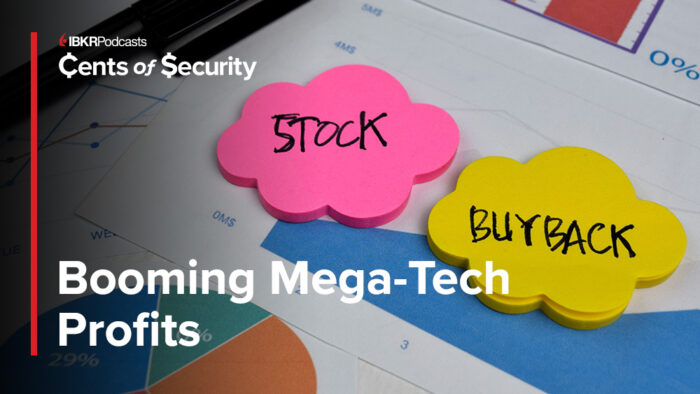Commentary
Market Recap
- Equity markets rose alongside Fed Chair Powell’s testimony to Congress, and encouraging U.S. inflation data.
- The S&P 500 gained 0.9%, with rate sensitives leading, while telecom services and the Nasdaq lagged.
- Meantime, the TSX jumped 2.8%, with all sectors posting gains.
CPI
Last week, markets received more comfort that inflation is headed in the right direction. The latest U.S. Consumer Price Index (CPI) report showed prices rose only 0.1% in June, the lowest pace since 2021.1 Some observers have argued the positive surprise justifies an early rate cut, but we still believe September is penciled in for the first move. After all, this was only one data point, and if the U.S. Federal Reserve (Fed) wants to remain cautious there’s little to be gained from going earlier. Also, central banks prefer to telegraph their actions ahead of time. If they were targeting a mid-summer timeline, we would likely have witnessed dovish comments during their Congressional testimony or in some of the Governors’ speeches. We did not see that. At this point, barring a sudden spike in prices, we expect Chairman Powell to hint at a rate cut over the summer and deliver on the promise in early Fall. Markets surged immediately after the CPI data was released, but later dropped as investors digested the full implications. In monetary policy, is good news actually bad news? Yes, lower inflation could indeed result in a rate cut, which is good, but the recent data also reflect a slowing economy, which is not good.
Bottom Line: All signs appear to point to a September rate cut from the Fed, though a second move is unlikely to come until after the U.S. presidential election.
Bonds
Adding to the mounting evidence for a rate cut is the fact that we’re seeing downward revisions on previous months’ inflation numbers. The Citigroup Economic Surprise Index—which tracks the difference between initial forecasts and official results—recently fell to a nine-year low, indicating that real economic performance is far below estimates.2 This raises the possibility of a rate cut, and also a key question: what parts of the fixed income universe will look more attractive? In general, we still prefer to tilt towards safety. Owning government bonds or higher-rated corporate credit provides confidence that we can capture the benefits of rate cuts without taking on too much risk. After all, a weaker economy results in a flight to safety, not to high yield bonds. Meanwhile, in terms of duration,3 we want to avoid the short end of the curve. But we also do not want to over-commit on the long end, because the Fed could pause after the September rate decision and delay a second rate cut until after the U.S. presidential election. So, there is risk at either end of the curve. Our solution is to strategically increase the tilt towards longer-dated bonds over the next few months and keep a watchful eye on duration as we get to that first rate cut.
Bottom Line: We want to add duration, but given that timing is essential in fixed income, we plan on executing that pivot over several months.
Small Caps
One of the interesting developments we saw recently was a pullback in megacap Technology names and a rotation into small cap equities. Are we making similar moves? Not quite yet. Overconcentration of Tech in the index (and many portfolios) has been an issue and valuations certainly look attractive in the small cap space, but it’s not where we believe flows are headed first. In our view, the first rotation from the Magnificent Seven should be to value-oriented plays within large cap—such as Financials, which benefit from the current rate environment. The multiples on these equities look much more favourable than the Tech heavyweights, and yet they have the size and scale to withstand a potential economic slowdown, which remains a risk factor for the near-term. Small cap companies, by contrast, are more vulnerable to macro risks and a weakened consumer.
Bottom Line: Small caps look attractive from a medium-term perspective, but for now we see better opportunities in value-oriented large cap equities.
Positioning
For a detailed breakdown of our portfolio positioning, check out the latest BMO GAM House View Report, titled Politics and profits: Finding wins in an election yearopens in new window.
—
Originally Posted July 16, 2024 – Is it time to swap Big Tech for Small Caps?
Footnotes
1 Consumer Price Index Summary – Economic News Release, U.S. Bureau of Labor Statistics, July 11, 2024.opens in new window↩
2 U.S. economic surprise index at 9 year low: Berman, BNN Bloomberg, July 8, 2024.opens in new window↩
3 Duration: A measure of the sensitivity of the price of a fixed income investment to a change in interest rates. Duration is expressed as number of years. The price of a bond with a longer duration would be expected to rise (fall) more than the price of a bond with lower duration when interest rates fall (rise).↩
Disclosure: BMO Exchange Traded Funds
Commissions, management fees and expenses all may be associated with investments in exchange traded funds. Please read the ETF Facts or prospectus of the BMO ETFs before investing. Exchange traded funds are not guaranteed, their values change frequently and past performance may not be repeated.
For a summary of the risks of an investment in the BMO ETFs, please see the specific risks set out in the BMO ETF’s prospectus. BMO ETFs trade like stocks, fluctuate in market value and may trade at a discount to their net asset value, which may increase the risk of loss. Distributions are not guaranteed and are subject to change and/or elimination.
BMO ETFs are managed by BMO Asset Management Inc., which is an investment fund manager and a portfolio manager, and a separate legal entity from Bank of Montreal.
®/™Registered trade-marks/trade-mark of Bank of Montreal, used under licence.
Disclosure: Interactive Brokers
Information posted on IBKR Campus that is provided by third-parties does NOT constitute a recommendation that you should contract for the services of that third party. Third-party participants who contribute to IBKR Campus are independent of Interactive Brokers and Interactive Brokers does not make any representations or warranties concerning the services offered, their past or future performance, or the accuracy of the information provided by the third party. Past performance is no guarantee of future results.
This material is from BMO Exchange Traded Funds and is being posted with its permission. The views expressed in this material are solely those of the author and/or BMO Exchange Traded Funds and Interactive Brokers is not endorsing or recommending any investment or trading discussed in the material. This material is not and should not be construed as an offer to buy or sell any security. It should not be construed as research or investment advice or a recommendation to buy, sell or hold any security or commodity. This material does not and is not intended to take into account the particular financial conditions, investment objectives or requirements of individual customers. Before acting on this material, you should consider whether it is suitable for your particular circumstances and, as necessary, seek professional advice.



























Join The Conversation
If you have a general question, it may already be covered in our FAQs. If you have an account-specific question or concern, please reach out to Client Services.